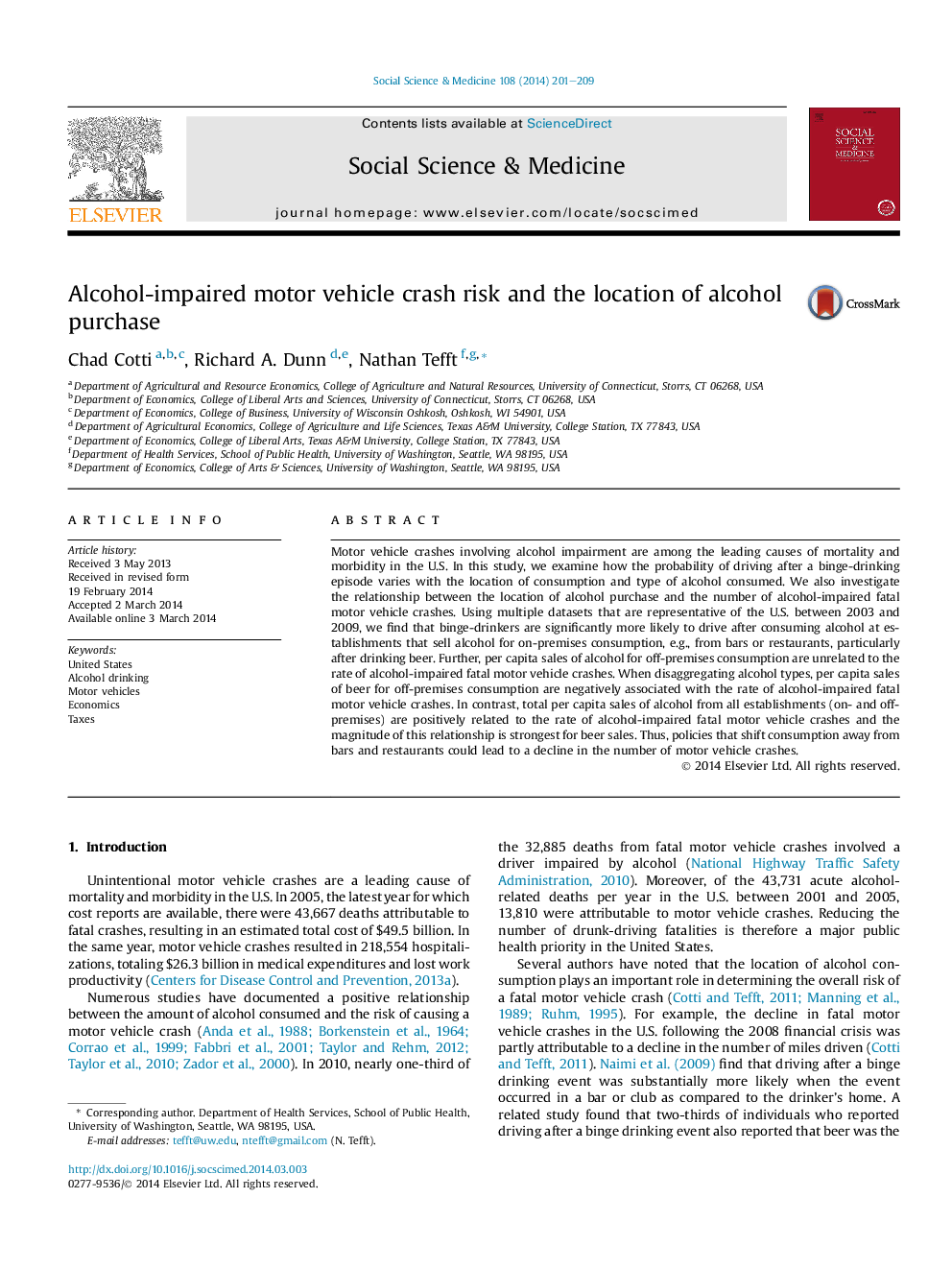| Article ID | Journal | Published Year | Pages | File Type |
|---|---|---|---|---|
| 7335346 | Social Science & Medicine | 2014 | 9 Pages |
Abstract
Motor vehicle crashes involving alcohol impairment are among the leading causes of mortality and morbidity in the U.S. In this study, we examine how the probability of driving after a binge-drinking episode varies with the location of consumption and type of alcohol consumed. We also investigate the relationship between the location of alcohol purchase and the number of alcohol-impaired fatal motor vehicle crashes. Using multiple datasets that are representative of the U.S. between 2003 and 2009, we find that binge-drinkers are significantly more likely to drive after consuming alcohol at establishments that sell alcohol for on-premises consumption, e.g., from bars or restaurants, particularly after drinking beer. Further, per capita sales of alcohol for off-premises consumption are unrelated to the rate of alcohol-impaired fatal motor vehicle crashes. When disaggregating alcohol types, per capita sales of beer for off-premises consumption are negatively associated with the rate of alcohol-impaired fatal motor vehicle crashes. In contrast, total per capita sales of alcohol from all establishments (on- and off-premises) are positively related to the rate of alcohol-impaired fatal motor vehicle crashes and the magnitude of this relationship is strongest for beer sales. Thus, policies that shift consumption away from bars and restaurants could lead to a decline in the number of motor vehicle crashes.
Related Topics
Health Sciences
Medicine and Dentistry
Public Health and Health Policy
Authors
Chad Cotti, Richard A. Dunn, Nathan Tefft,
